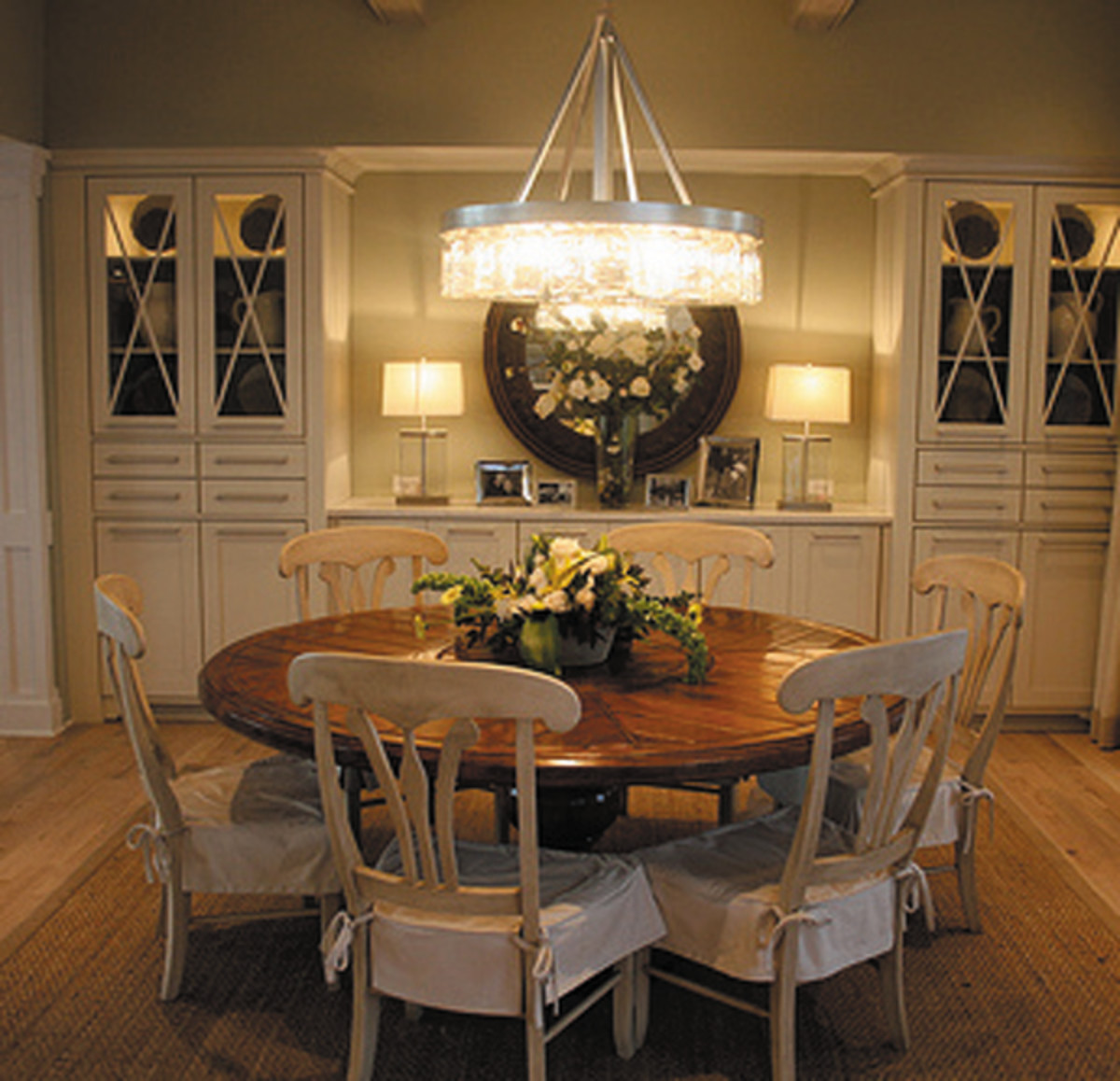Table Of Content

Take the central axis of this focal point and work outwards mirroring either side of it design elements such as furniture, lighting and objects. Planning out your spaces can be easy if you understand the principles of applying balance. It is key to making a room look visually stable by the simple placement of furniture, accessories, the use of colour and other elements such as form, and size. Without it you will end up a room that feels, and looks uncomfortable to be in. A room feels balanced when there is just the right mix of vintage and modern, dark and light, linear and curved, hard and soft - the contrasts are limitless. As shown above, this living room designed by SHH embraces the rules of symmetry to create a beautifully balanced design.
Use the 60-30-10 rule to balance color
Symmetry is all about creating a visual balance and a rhythm within the present layout of your space to bring continuity without making the space look monotonous or boring. But to create that balance without losing the functionality of your home’s interior design can be a challenge. Balance is a fundamental principle in interior design that ensures a room feels harmoniously arranged and visually pleasing. It is achieved when the elements of a room, such as furniture, color, and texture, are distributed in a way that creates a sense of equilibrium. Balance can make a room feel more comfortable, inviting, and stable, enhancing the overall aesthetic and functionality of the space. Although classic examples are less popular in modern interior design, symmetry is no doubt the building block of balance.
Or, turn to radial symmetry

Copenhagen born, Cathrine Dal, is the founder of London-based interior design studio, Cat Dal Interiors, who have a design ethos rooted in Scandinavian design. Not measuring furniture before purchasing and bringing it into a room is another common mistake I’ve encountered. Be sure to check the dimensions of your room and the furniture you intend to buy, so they fit together harmoniously without overcrowding the area. Are you someone who loves to entertain, or do you prefer a quiet, cozy atmosphere? Knowing your lifestyle preferences will influence decisions on factors like furniture layout, storage solutions, and color schemes. This design is best applied in dining rooms, hotels, or offices because it requires a lot of space to start designing from the center.
Rule 1: The Rule of Symmetry
Patrick works with designers in the UK and North America, helping to bring their projects alive with the iconic, F&B color palette. Woven from jute, creating an inviting, tactile texture, this round, natural rug from Pottery Barn, can easily integrate into an array of styled spaces. Styling with symmetry is key for creating balance and good feng shui in the home, as it can help to make a room feel more neat, organized and cohesive.
Symmetrical balance lends itself to a more formal and ordered look, while asymmetrical balance creates a looser more eclectic feel,' says Cathrine Dal, from London-based design studio, Cat Dal interiors. In my experience, incorporating these different types of balance can really enhance the overall design of the space, making it a more inviting and appealing environment. Whether I’m designing a formal living room or a casual family space, I focus on maintaining visual balance by distributing furniture, lighting, and decorative elements evenly across the room. This ensures that every area is engaging and visually well-coordinated, reflecting a harmonious and pleasing atmosphere. It is important to understand Balance in interior design to create a harmonious and aesthetically pleasing space.
Inside a Lynn Valley home designed for better work-life balance - Vancouver Sun
Inside a Lynn Valley home designed for better work-life balance.
Posted: Fri, 06 Oct 2023 07:00:00 GMT [source]
Achieving balance adds a sense of calm, relaxation, and unity to your design. By prioritizing functionality in your interior design, you can create a space that not only looks beautiful but also meets the practical needs of its inhabitants. Remember, a well-balanced interior is one that seamlessly integrates aesthetics with functionality. The rule of functionality emphasizes the importance of designing a space that is not only visually appealing but also practical and functional. A well-designed interior should cater to the needs and activities of its occupants while maintaining a sense of balance and aesthetic expression. Proportion, on the other hand, involves the relationship between different elements in the room.
- Incorporating Textures and Materials for a Balanced Asymmetrical Design
It requires a thoughtful consideration of the scale, proportion, and arrangement of elements within a space to achieve the desired level of visual harmony. Just as it sounds radial balance is almost circular – distributed arrangement of items around a central point either extending outward or inward. Common examples of radial balance translated to the interior environment include chairs centered around a table, the structure of a circular rotunda, or even a circular lighting fixture. If you wish to create focus on a central item, applying radial balance (so that the your attention is directed inward) is a great way to achieve this. Symmetrical balance is achieved when items are actually repeated or mirrored along a central axis.
Texture
The entire arrangement is geared toward highlighting the fireplace, and using identical couches on either side of the unit creates a good balance. For example, richly colored, patterned, and textured elements, such as walls or furniture, are generally heavy when considering visual weight. So, you will create the perfect equilibrium by posing these against fewer and equally heavy elements or multiple less-heavy elements. Again, taking into account the focal point, we build on the sides of it, without trying to replicate everything we see on either side.
Understanding Balance in Interior Design
For example, you might combine a sleek glass coffee table with a plush velvet sofa or pair a rustic wooden dining table with modern metal chairs. The contrasting textures and materials will work together to create a perfectly balanced, asymmetrical design. Shapes and forms play a significant role in creating asymmetrical balance in interior design.
Create spaces that are balanced, inviting, and a true reflection of your unique style and personality. The rule of focal point is all about creating a central point of interest in a room that draws attention and anchors the design. A well-executed focal point adds depth, drama, and visual hierarchy to the space, contributing to a balanced and cohesive interior. When applying the rule of color harmony, it’s important to consider the overall mood and desired atmosphere of the space. For example, if you want to create a calming bedroom, opting for a monochromatic color scheme in shades of blue or green can achieve a serene ambiance. Learn how to create balance in your interior design with these 7 essential rules.
The rule of visual weight is all about balancing the visual prominence of different elements in a room. Every object or element in a space carries a certain visual weight, which refers to how much attention it attracts compared to other objects. Understanding and manipulating the visual weight of objects is key to achieving balance in interior design. Symmetry is one of the foundational principles of interior design and involves creating balance by mirroring elements on either side of a central axis.
Cynthia Almario on finding balance in and out of her interior design practice - Inquirer.net
Cynthia Almario on finding balance in and out of her interior design practice.
Posted: Sun, 31 Mar 2024 07:00:00 GMT [source]
When you achieve an equilibrium, there is a feeling of calm and also a slight intrigue and individuality to the space. Once you know the feeling you want to create, you can choose a type of balance that will help to achieve that goal. This will help identify which design elements to prioritize, allowing for a functional and comfortable environment. For example, in a living room, this is often the TV, and in a bedroom, it is usually the bed.
Radial balance is a popular option in bigger homes and in those with curved walls. As all other methods propose, the design starts off with a focal point, but then creates balance from the centre of the focal point outwards, like the rings outside of Saturn. This option can also be adapted to square or rectangular rooms where the focal point is in the middle of the room, like a fountain in the middle of a patio or a dining set in the centre of a dining room. When looking to create contrast, one should remember to let one colour dominate the scheme, while the other accents it. For example, this can be done by choosing one shade for the walls and the other for textiles, furniture and accessories. Ready to design a space that’s purposefully off-kilter and beautifully on point?
Designers may use one or more of these settings, including the principles of balance in interior design, to create their unique style, thus creating a structured, playful, and visually arresting space. You can, of course, implement both asymmetry and symmetry together, to create a more interesting and dynamic design scheme. The furniture, however, uses the unexpected use of asymmetry, which creates a more relaxed feel to the room. Although, generally speaking, the place where your eye falls first when you enter a room is the focal point.

No comments:
Post a Comment